Abstract
Volcanoes erupt magma (molten rock containing variable amounts of solid crystals, dissolved volatiles, and gas bubbles) along with pulverized pre-existing rock (ripped from the walls of the vent and conduit). The resulting volcanic rocks vary in their physical and chemical characteristics, e.g., degree of fragmentation, sizes and shapes of fragments, minerals present, ratio of crystals to glass, and major and trace elements composition. Variability in the properties of magma, and in the relative roles of magmatic volatiles and groundwater in driving an eruption, determine to a great extent the type of an eruption; variability in the type of an eruption in turn influences the physical characteristics and distribution of the eruption products. The principal volcanic hazards are: ash and larger fragments that rain down from an explosion cloud (airfall tephra and ballistic fragments); flows of hot ash, blocks, and gases down the slopes of a volcano (pyroclastic flows); "mudflows" (debris flows); lava flows; and concentrations of volcanic gases in topographic depressions. Progress in volcanology is bringing improved long- and short-range forecasts of volcanic activity, and thus more options for mitigation of hazards. Collaboration between health professionals and volcanologists helps to mitigate health hazards of volcanic activity.
Full text
PDF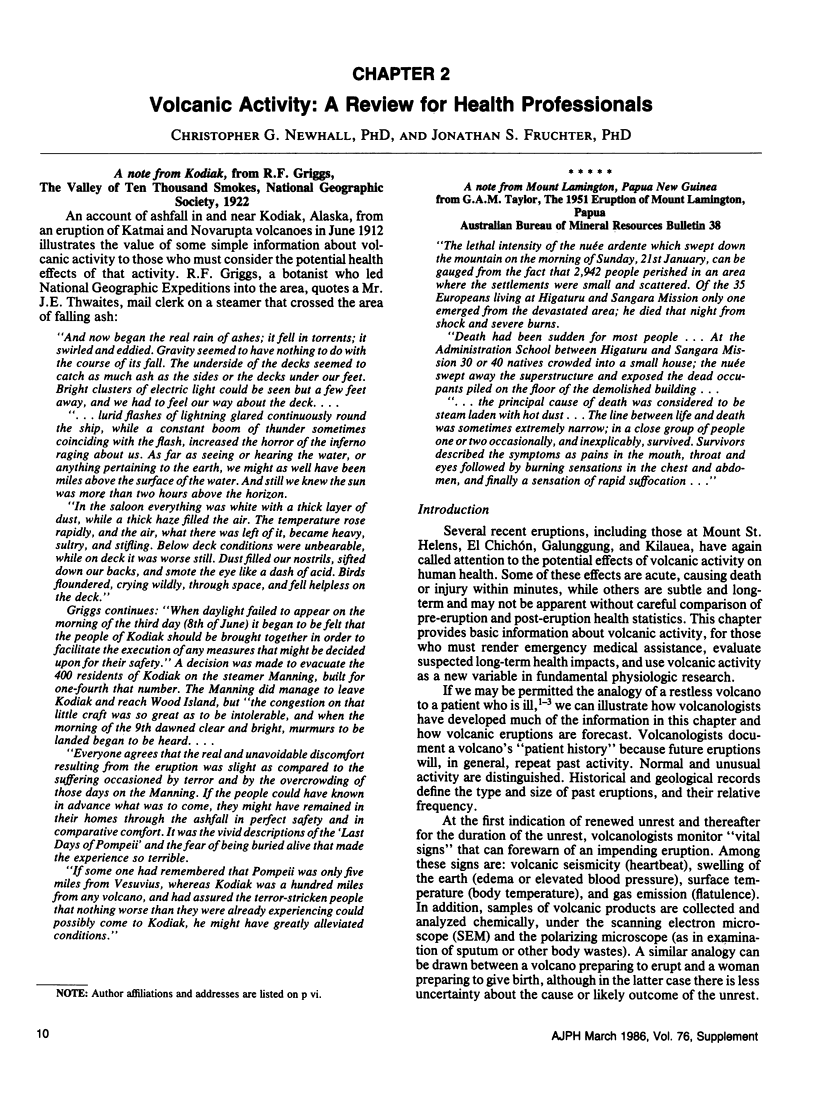
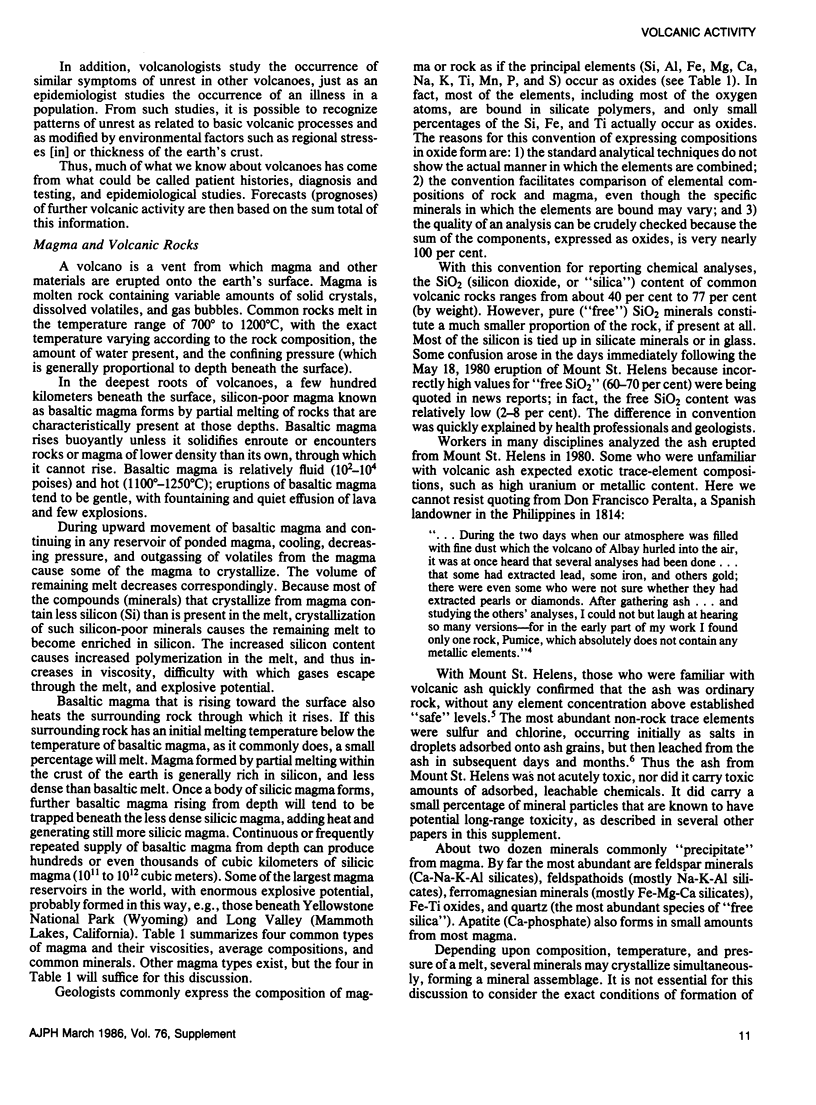
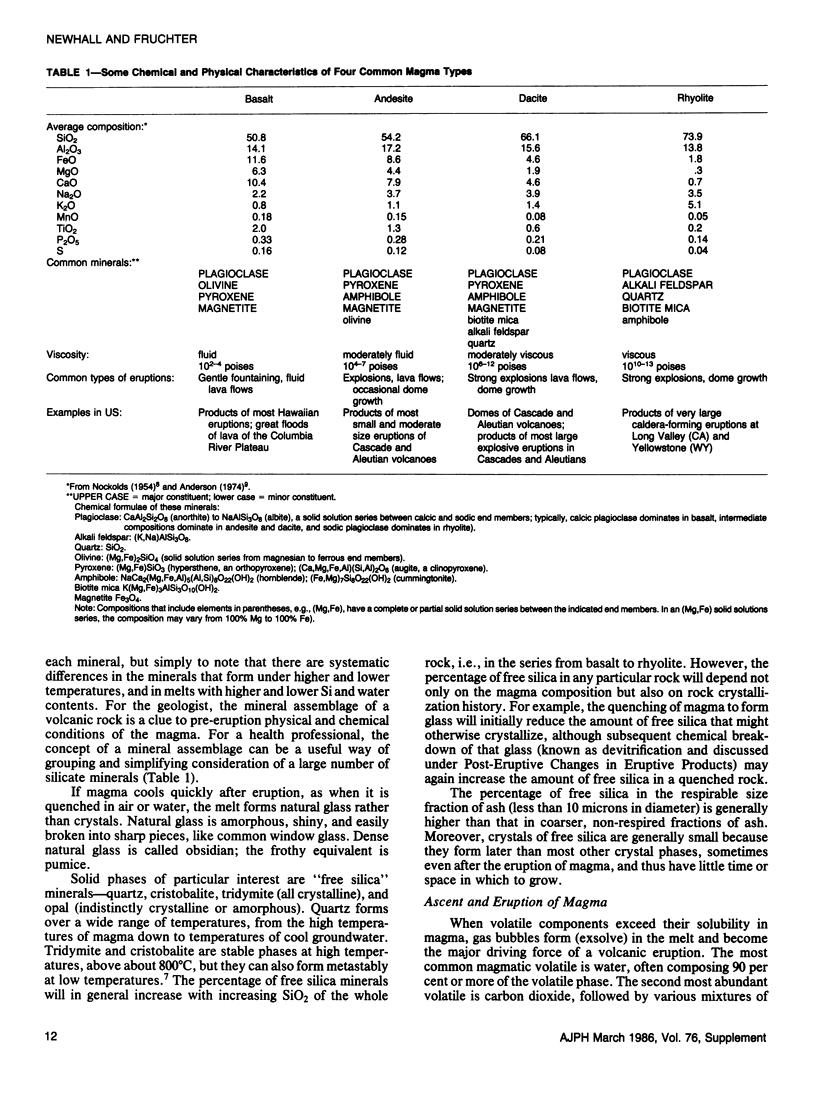
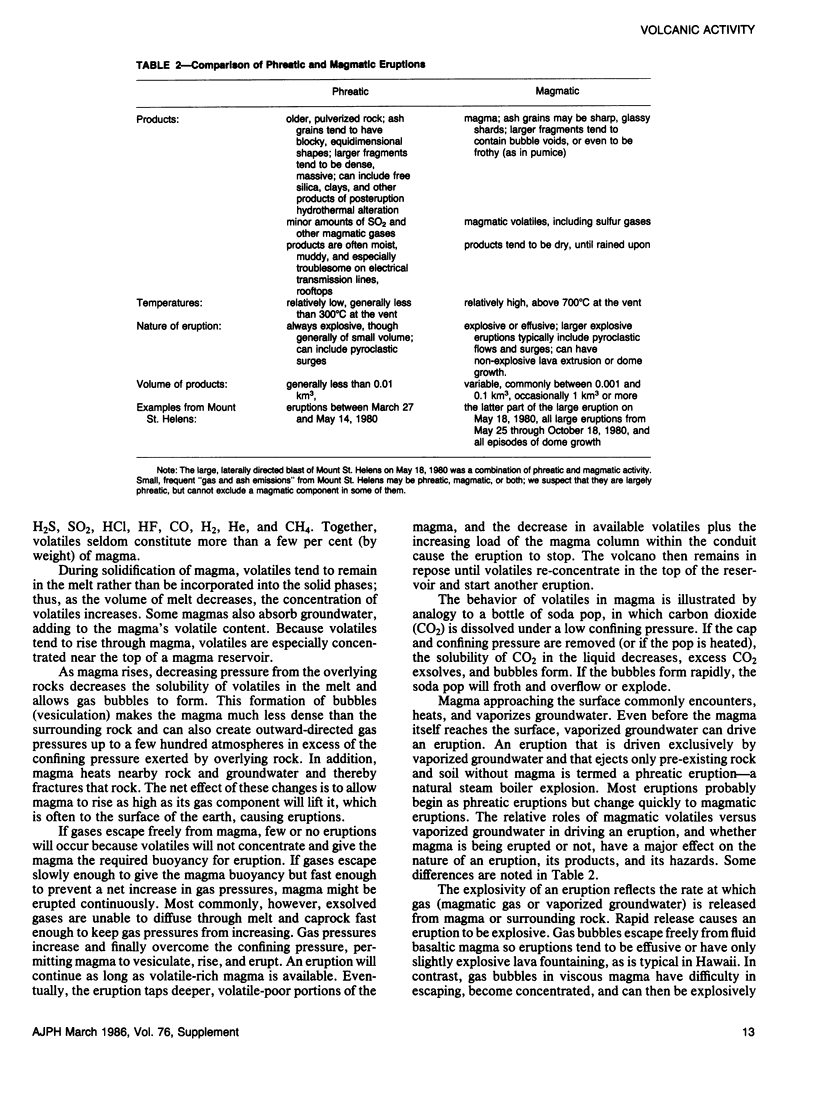
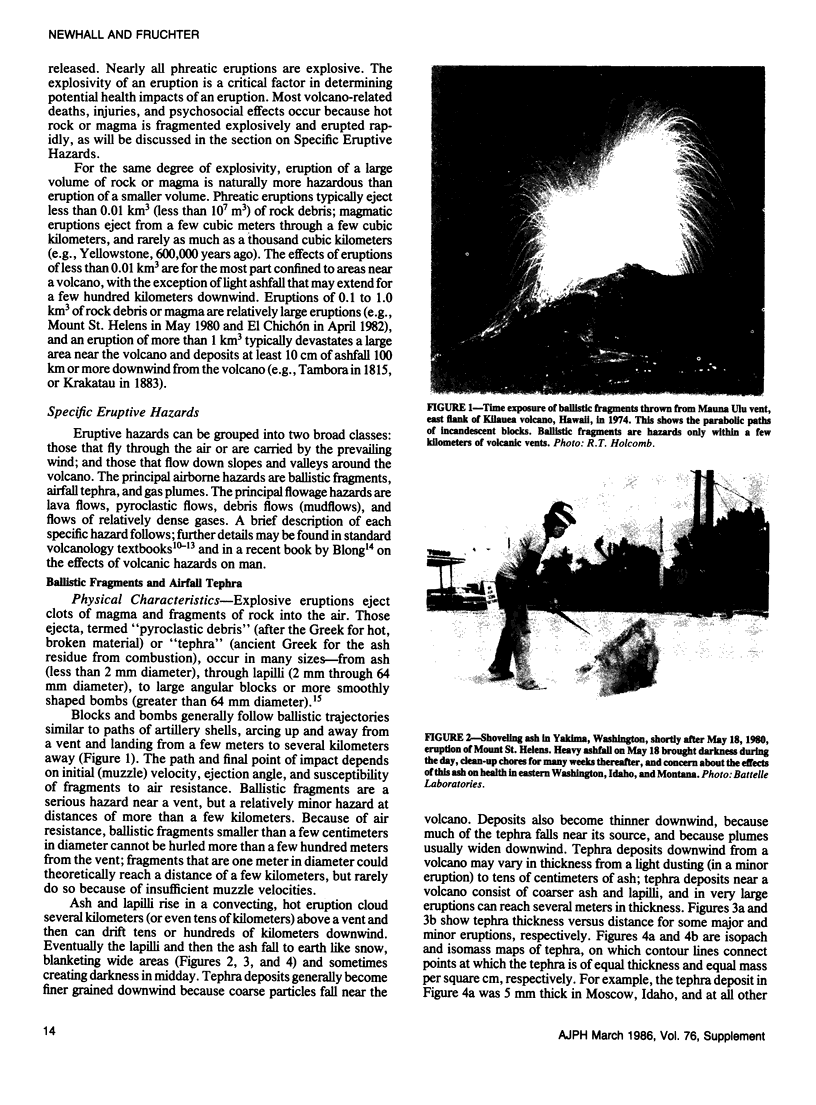
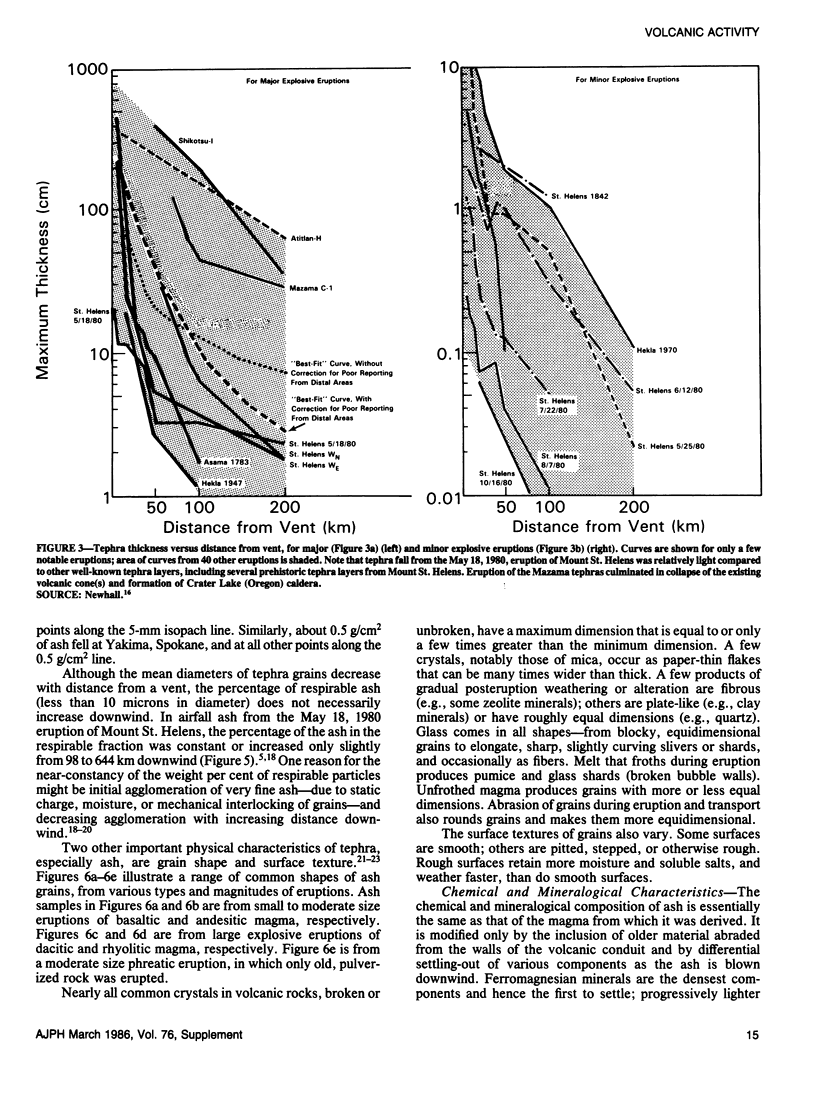
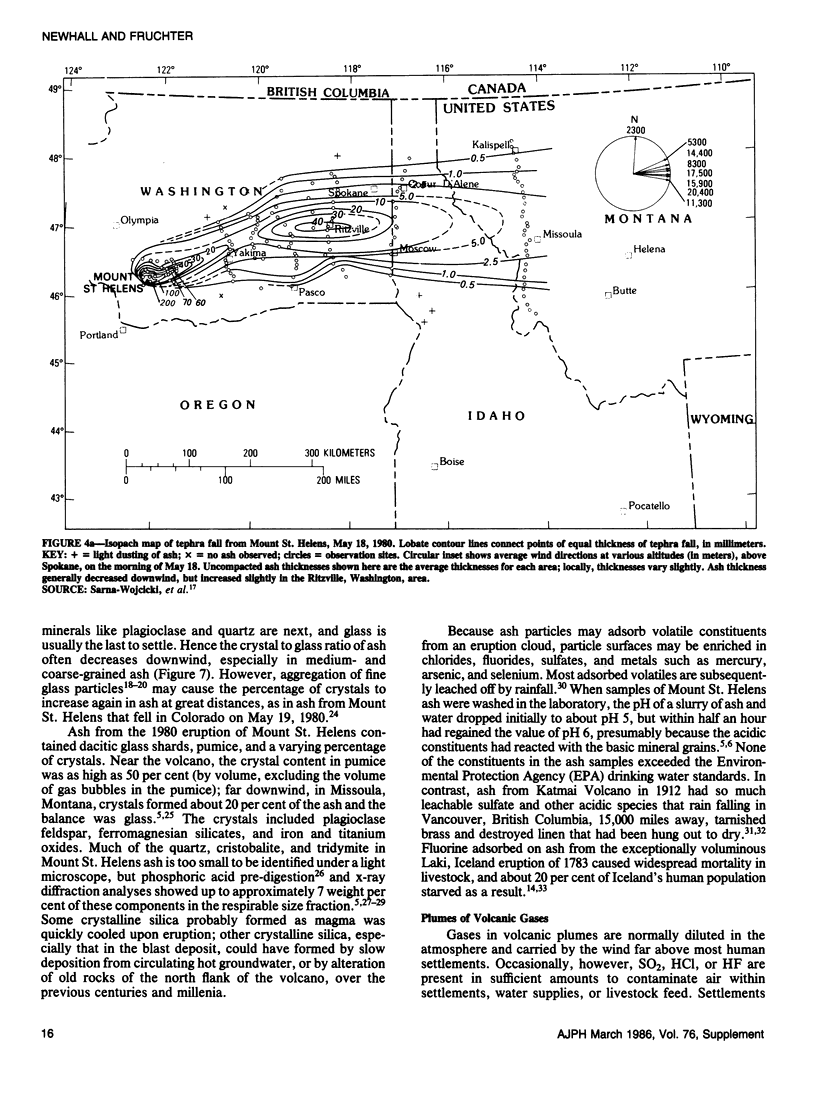
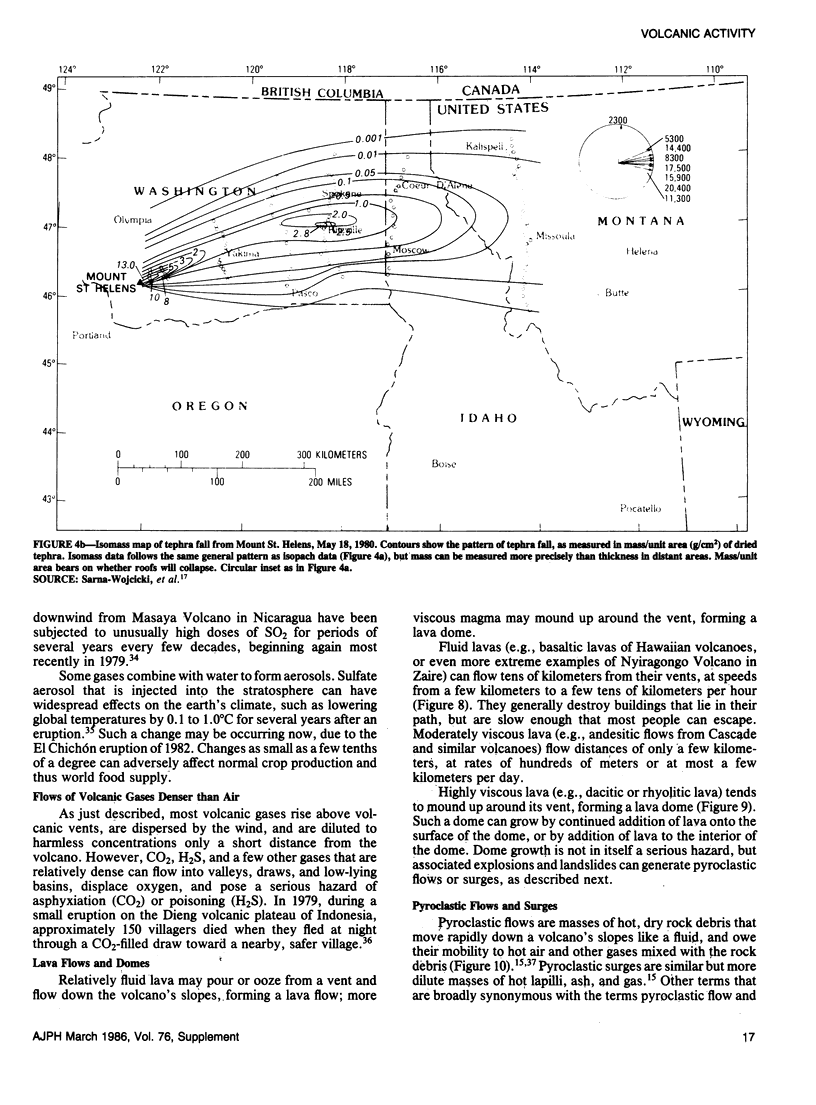
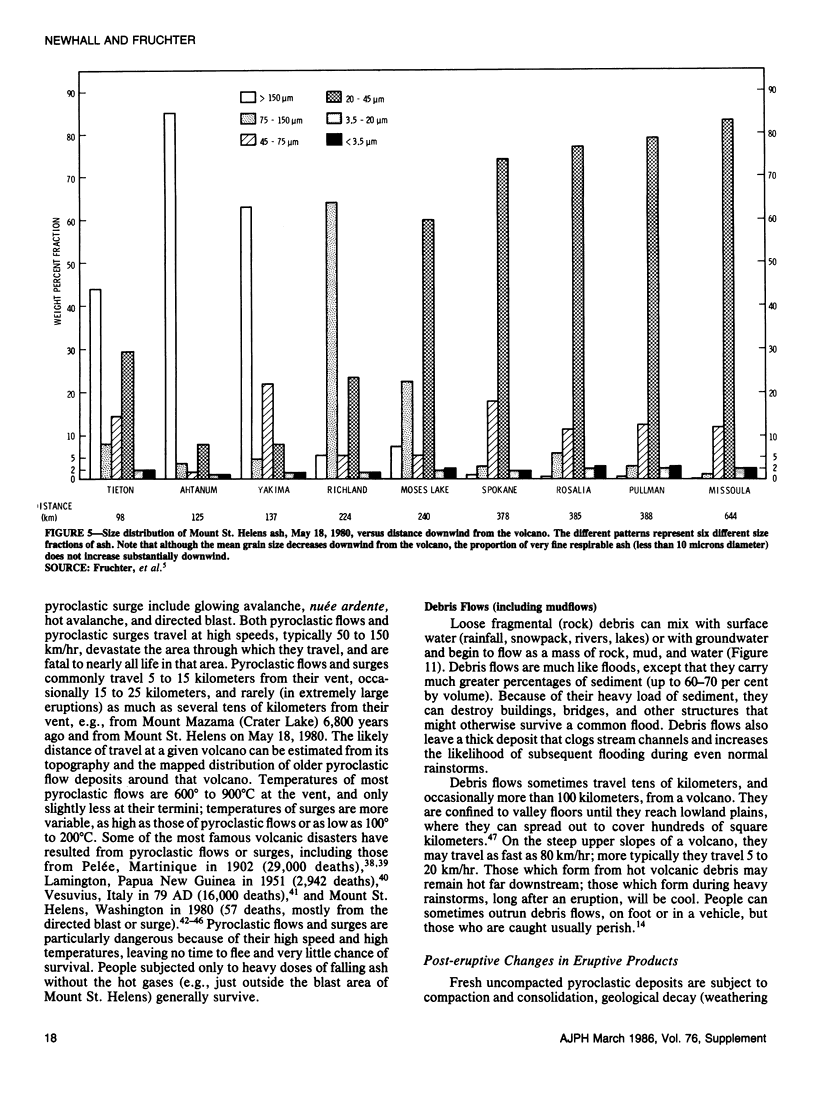
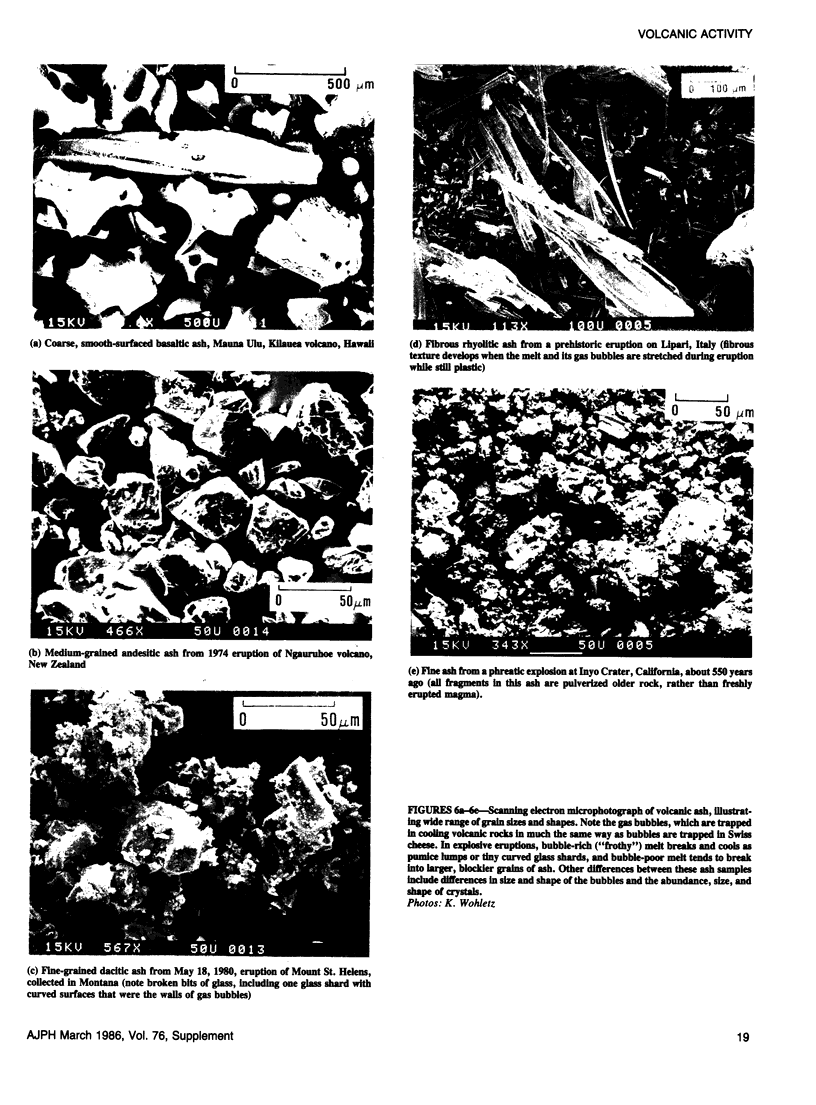
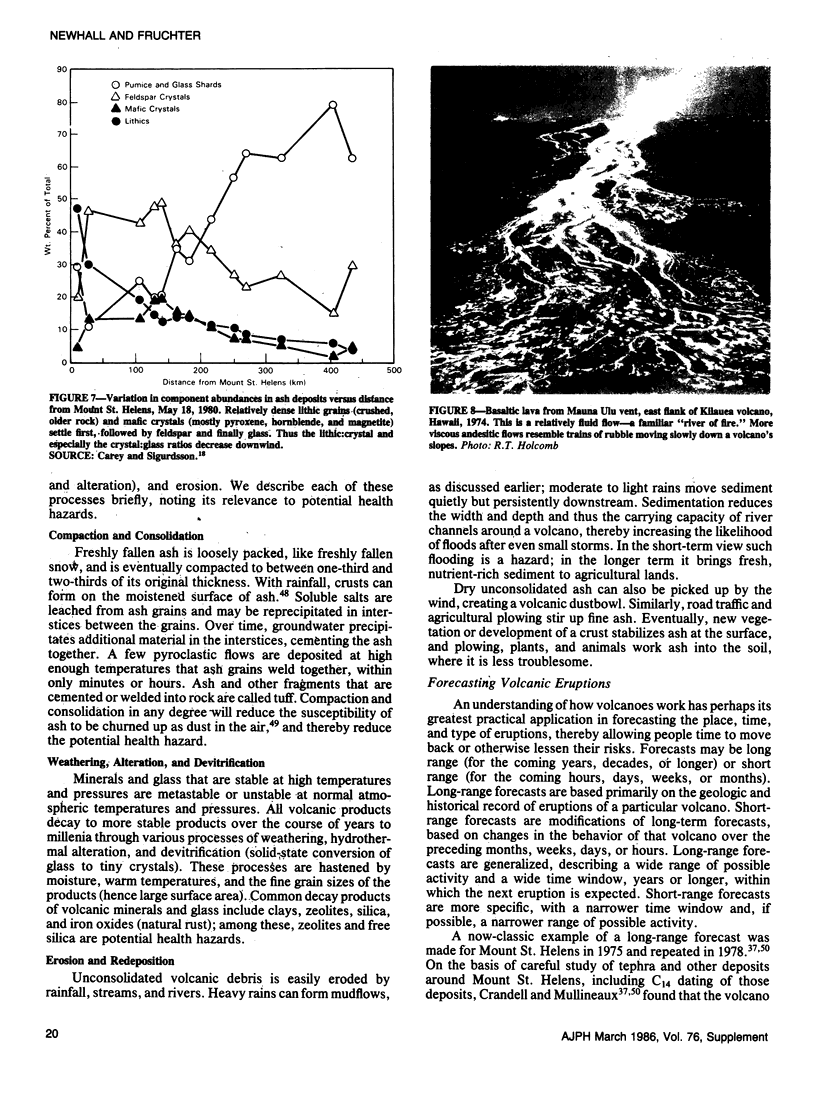
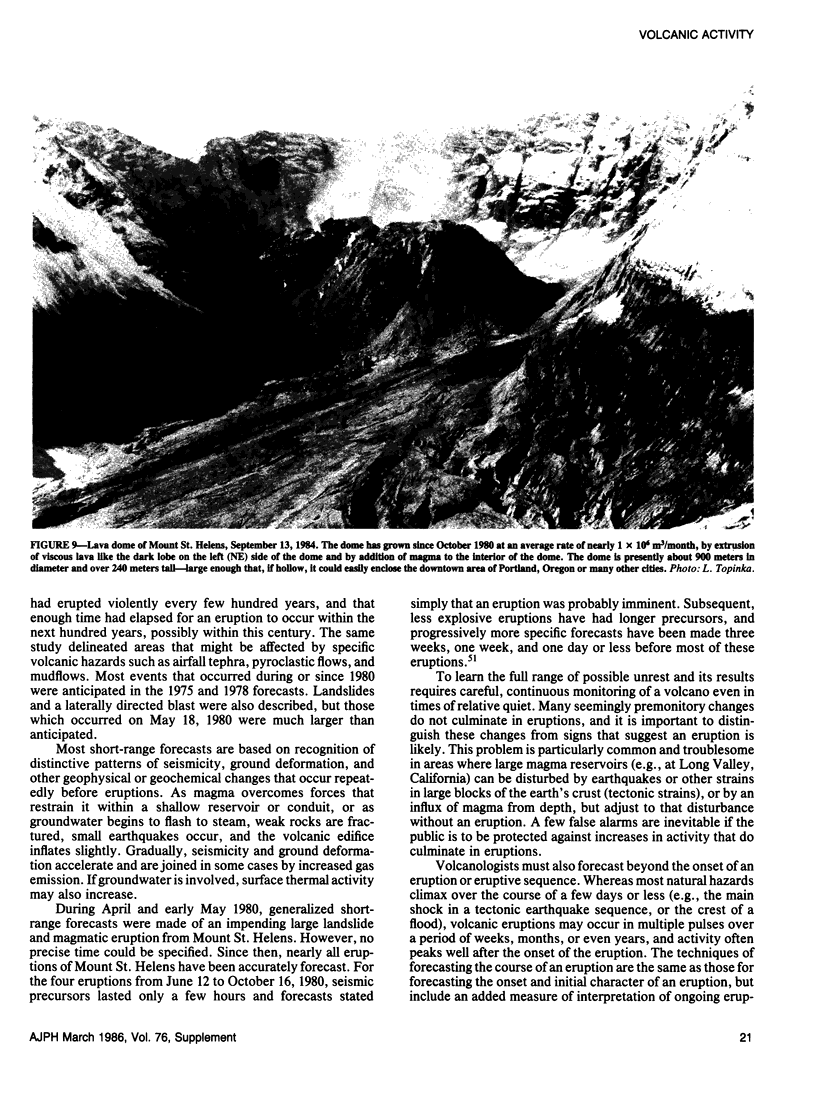
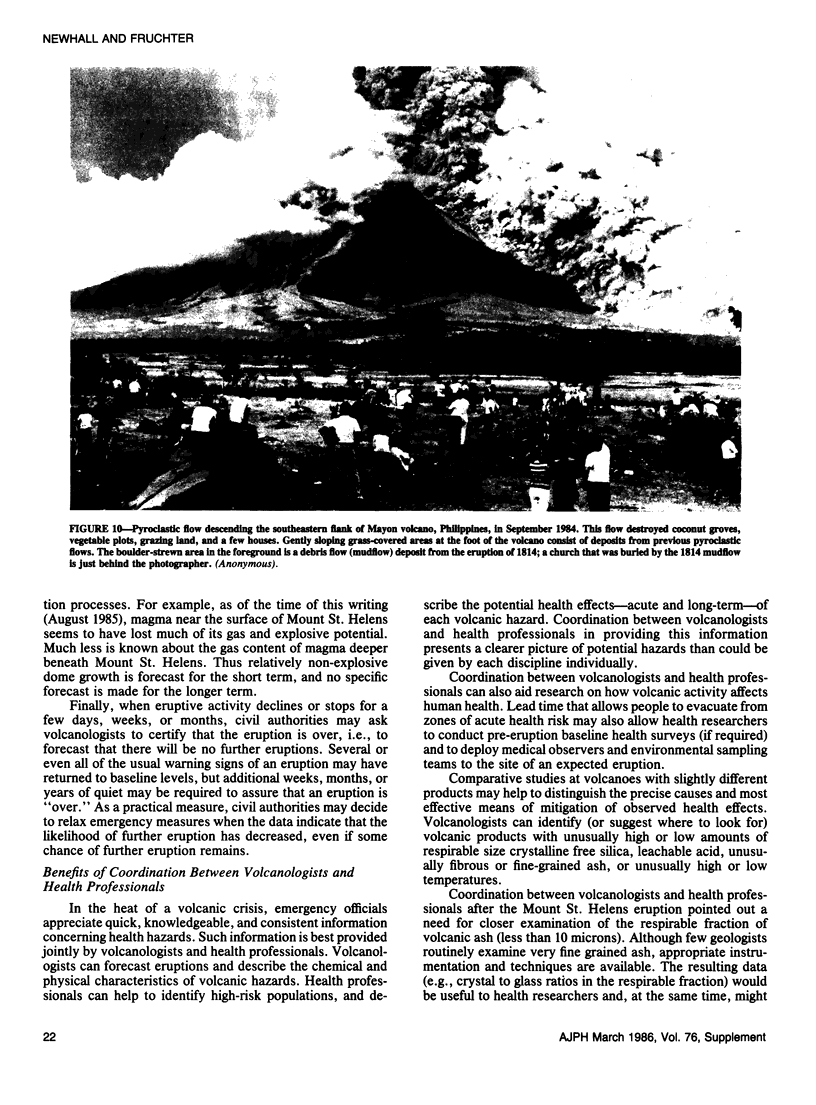
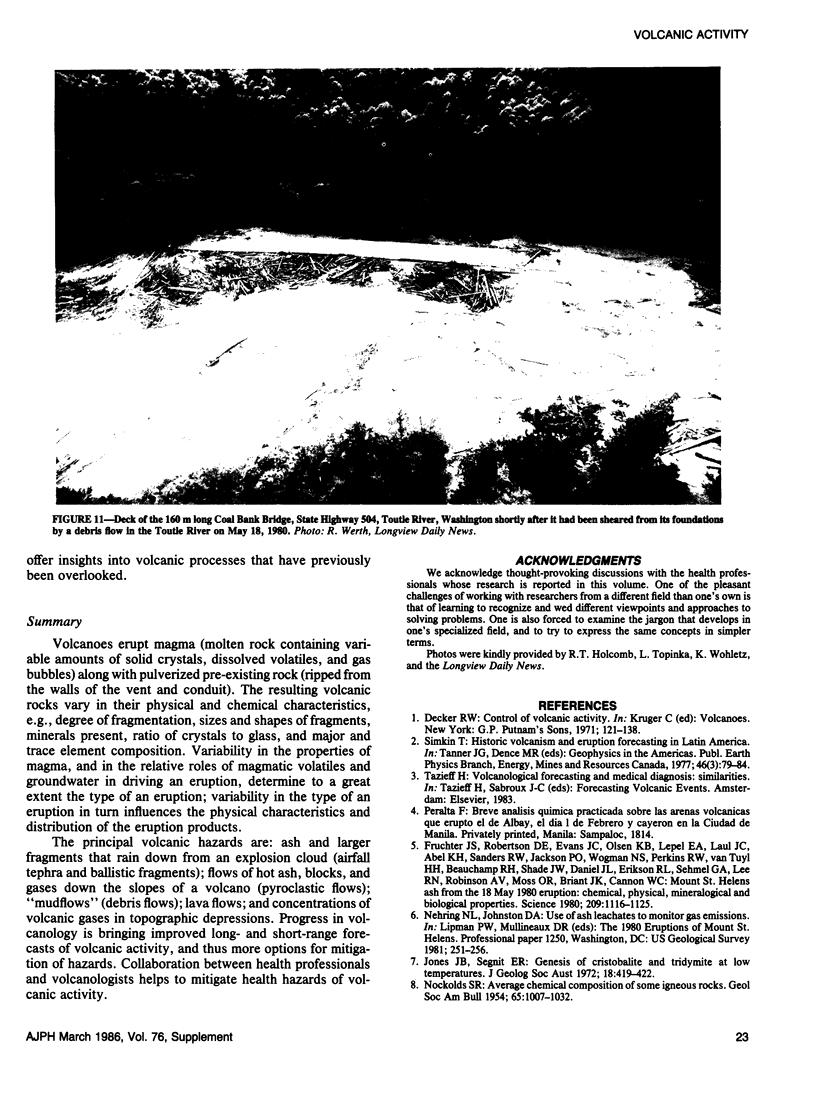
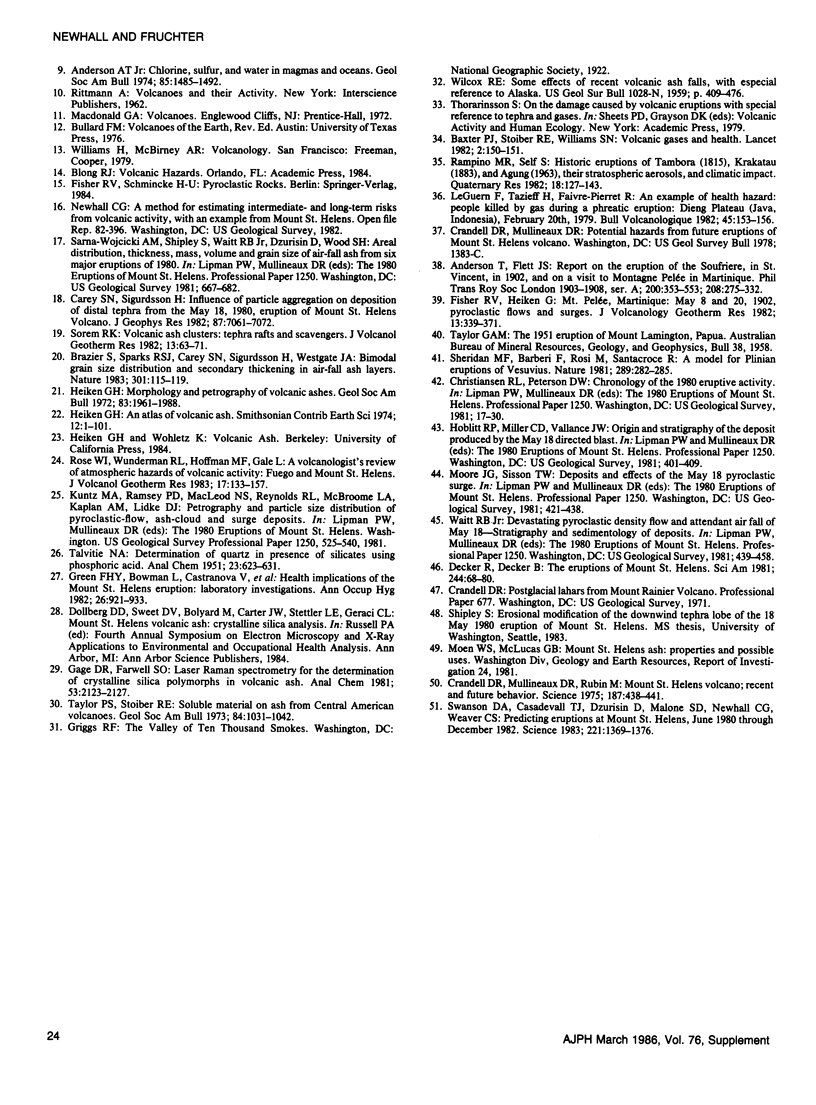
Images in this article
Selected References
These references are in PubMed. This may not be the complete list of references from this article.
- Baxter P. J., Stoiber R. E., Williams S. N. Volcanic gases and health: Masaya Volcano, Nicaragua. Lancet. 1982 Jul 17;2(8290):150–151. doi: 10.1016/s0140-6736(82)91109-6. [DOI] [PubMed] [Google Scholar]
- Crandell D. R., Mullineaux D. R., Rubin M. Mount st. Helens volcano: recent and future behavior. Science. 1975 Feb 7;187(4175):438–441. doi: 10.1126/science.187.4175.438. [DOI] [PubMed] [Google Scholar]
- Fruchter J. S., Robertson D. E., Evans J. C., Olsen K. B., Lepel E. A., Laul J. C., Abel K. H., Sanders R. W., Jackson P. O., Wogman N. S., Perkins R. W., VAN Tuyl H. H., Beauchamp R. H., Shade J. W., Daniel J. L., Erikson R. L., Sehmel G. A., Lee R. N., Robinson A. V., Moss O. R., Briant J. K., Cannon W. C. Mount st. Helens ash from the 18 may 1980 eruption: chemical, physical, mineralogical, and biological properties. Science. 1980 Sep 5;209(4461):1116–1125. doi: 10.1126/science.209.4461.1116. [DOI] [PubMed] [Google Scholar]
- Green F. H., Bowman L., Castranova V., Dollberg D. D., Elliot J. A., Fedan J. S., Hahon N., Judy D. J., Major P. C., Mentnech M. S. Health implications of the Mount St. Helen's eruption: laboratory investigations. Ann Occup Hyg. 1982;26(1-4):921–933. [PubMed] [Google Scholar]
- Swanson D. A., Casadevall T. J., Dzurisin D., Malone S. D., Newhall C. G., Weaver C. S. Predicting eruptions at mount st. Helens, june 1980 through december 1982. Science. 1983 Sep 30;221(4618):1369–1376. doi: 10.1126/science.221.4618.1369. [DOI] [PubMed] [Google Scholar]










